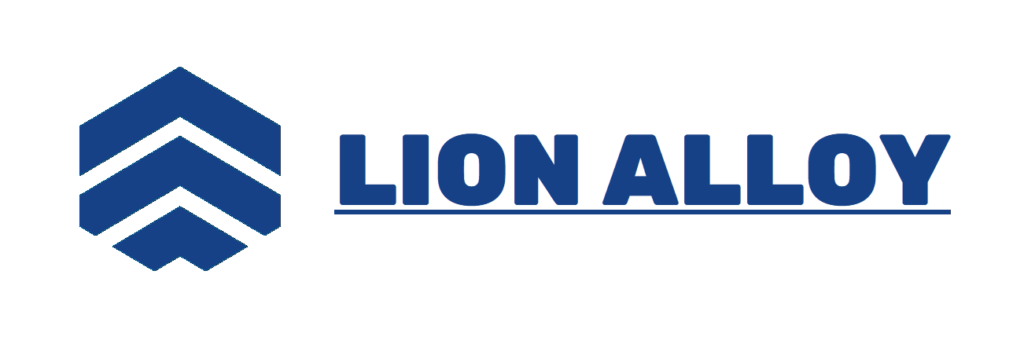giriiş
NIMONIC 80A is a nickel-based superalloy that has captured the attention of engineers and materials scientists due to its exceptional performance in high-temperature applications. This alloy exhibits outstanding mechanical properties, resistance to oxidation and corrosion, and thermal stability, making it an ideal choice for gas turbines, aerospace components, and various industrial applications. This comprehensive article explores the composition, properties, manufacturing, applications, and advantages of NIMONIC 80A while providing comparative insights with other materials.
1. NIMONIC 80A'nın Bileşimi
NIMONIC 80A’s unique properties arise from its carefully balanced composition. The primary components of NIMONIC 80A include nickel, chromium, iron, and other alloying elements that enhance its performance under extreme conditions.
Tablo 1: NIMONIC 80A'nın Kimyasal Bileşimi
| Öğe | Yüzde (%) | İşlev |
|---|---|---|
| Nikel | 46.0 | Base metal, provides good ductility |
| Krom | 20.0 | Oksidasyon direncini artırır |
| Ütü | 5.0 | Improves strength |
| Molibden | 1.0 | Yüksek sıcaklık dayanımını artırır |
| Kobalt | 3.0 | Enhances creep resistance |
| Titanyum | 1.0 | Provides strength and improves heat resistance |
| Alüminyum | 00,5 | Stabilizes the microstructure and aids in oxidation resistance |
| Diğerleri | Denge | Includes carbon, manganese, silicon, phosphorus, and sulfur |
2. Properties of NIMONIC 80A
NIMONIC 80A exhibits a combination of mechanical, thermal, and corrosion-resistant properties that make it suitable for high-temperature applications.
2.1 Mechanical Properties
The mechanical properties of NIMONIC 80A are essential for its performance in critical applications.
Tablo 2: NIMONIC 80A'nın Mekanik Özellikleri
| Mülk | Değer |
|---|---|
| Akma Dayanımı (MPa) | 600 |
| Nihai Çekme Dayanımı (MPa) | 860 |
| Uzama (%) | 30 |
| Sertlik (HB) | 200 |
| Esneklik modülü (GPA) | 200 |
2.2 Thermal Stability
NIMONIC 80A can maintain its mechanical properties at elevated temperatures, making it suitable for high-temperature environments.
Table 3: Thermal Characteristics of NIMONIC 80A
| Mülk | Değer |
|---|---|
| Service Temperature Range (°C) | Up to 900 |
| Eritme noktası (° C) | 1300 |
| Coefficient of Thermal Expansion (x10^-6/°C) | 16.5 |
2.3 Corrosion and Oxidation Resistance
The corrosion and oxidation resistance of NIMONIC 80A ensures its performance in aggressive environments.
Table 4: Corrosion & Oxidation Resistance of NIMONIC 80A
| Characteristic | Verim |
|---|---|
| Oksidasyon Direnci | Harika |
| Pitting Resistance | İyi |
| Stress Corrosion Cracking Resistance | Ilıman |
3. Manufacturing of NIMONIC 80A
NIMONIC 80A is primarily manufactured using several techniques that enhance its mechanical properties, including casting, forging, and forming.
3.1 Casting
Casting processes allow for complex shapes and geometries, making them suitable for turbine components.
Table 5: Casting Process of NIMONIC 80A
| İşlem | Tanım |
|---|---|
| Investment Casting | Uses molds to create intricate shapes |
| Sand Casting | Suitable for larger components |
3.2 Forging
Forging enhances the grain structure of the metal, improving strength and ductility.
Table 6: Forging Parameters for NIMONIC 80A
| Parametre | Değer |
|---|---|
| Sıcaklık (°C) | 900 – 1200 |
| Deformasyon Oranı | 3:1 |
| Soğutma Hızı | Kontrollü |
4. Applications of NIMONIC 80A
NIMONIC 80A is widely used in various industries due to its superior performance in high-temperature environments.
4.1 Aerospace Industry
NIMONIC 80A is extensively used in aerospace applications, particularly in gas turbines, where reliability and performance are crucial.
Table 7: Aerospace Applications of NIMONIC 80A
| Bileşen | Başvuru |
|---|---|
| Türbin Kanatları | High-stress rotational components |
| Yakma Kutuları | Containment of high-pressure gases |
| High-Temperature Exhaust Pipes | Heat resistance in turbo machinery |
4.2 Industrial Applications
In industrial settings, NIMONIC 80A is used in a variety of high-temperature processes.
Table 8: Industrial Applications of NIMONIC 80A
| Başvuru | Tanım |
|---|---|
| Fırın Armatürleri | Components that must withstand high heat |
| Kimyasal İşleme Ekipmanları | Equipment exposed to corrosive environments |
| Isı Eşanjörleri | Ensures efficient thermal transfer |
5. Advantages of NIMONIC 80A
NIMONIC 80A offers several advantages that enhance its suitability for high-temperature applications.
5.1 High-Temperature Strength
NIMONIC 80A maintains its strength and mechanical properties at elevated temperatures, ensuring reliable performance in demanding environments.
5.2 Excellent Oxidation Resistance
The alloy’s composition provides exceptional resistance to oxidation, making it ideal for applications involving high temperatures and oxidative environments.
5.3 Versatility and Fabricability
NIMONIC 80A can be easily cast, forged, and worked into a variety of shapes, allowing for its use in diverse applications.
5.4 Cost-Effectiveness
While the initial cost may be higher than standard alloys, its durability and long lifespan often result in lower overall costs in demanding applications.
6. Comparative Analysis with Other Nickel-Based Alloys
To better understand the unique characteristics of NIMONIC 80A, let’s compare it with other common nickel-based alloys, such as Inconel 625 and Inconel 718.
Table 9: Comparative Properties of Nickel-Based Alloys
| Mülk | NIMONIC 80A | İnkonel 625 | İnkonel 718 |
|---|---|---|---|
| Akma Dayanımı (MPa) | 600 | 550 | 930 |
| Nihai Çekme Dayanımı (MPa) | 860 | 770 | 1000 |
| Service Temperature Range (°C) | Up to 900 | Up to 1000 | Up to 700 |
| Oksidasyon Direnci | Harika | Harika | İyi |
| Pitting Resistance | İyi | Harika | Ilıman |
Çözüm
NIMONIC 80A stands out as a remarkable material in the realm of high-temperature engineering. Its unique composition, excellent mechanical properties, thermal stability, and resistance to oxidation and corrosion make it an ideal choice for demanding applications in the aerospace and industrial sectors. As industries continue to push the limits of technology, NIMONIC 80A will play a critical role in advancing performance and reliability in high-temperature environments.
By understanding the characteristics and advantages of NIMONIC 80A, engineers and materials scientists can leverage this marvelous alloy to innovate and improve their designs, ultimately contributing to the development of more efficient and durable products.


